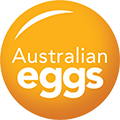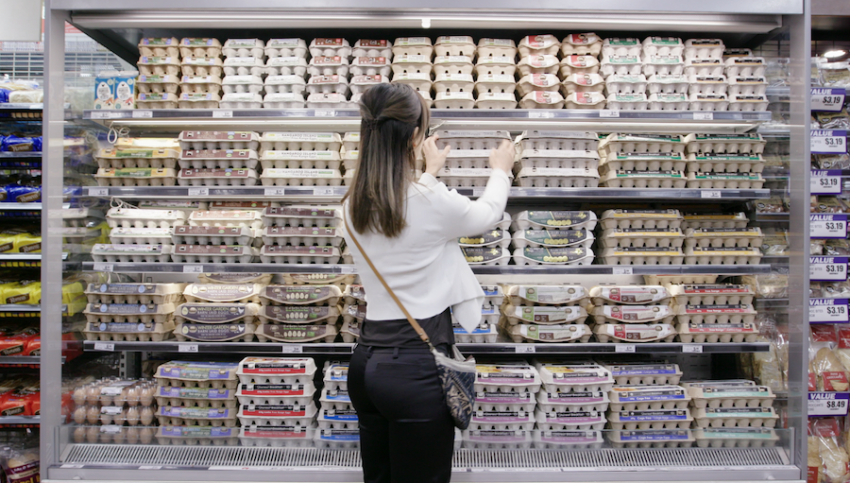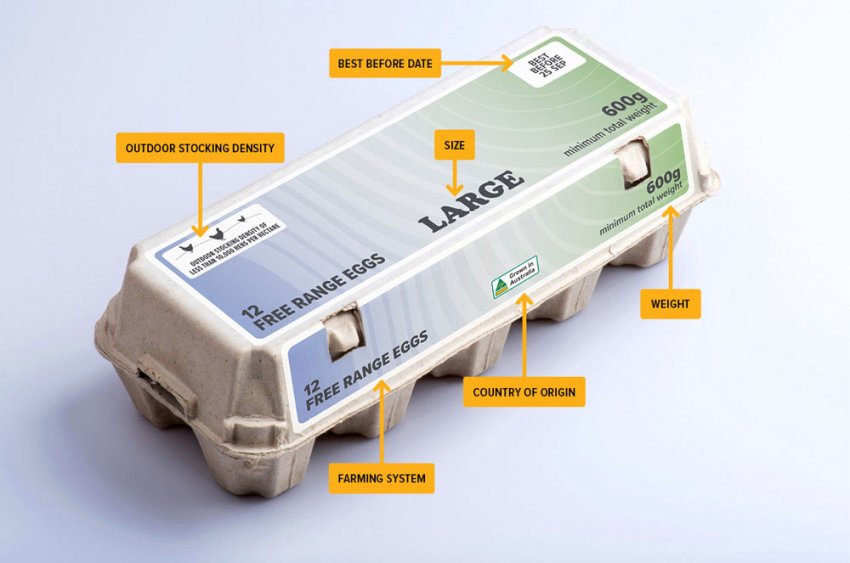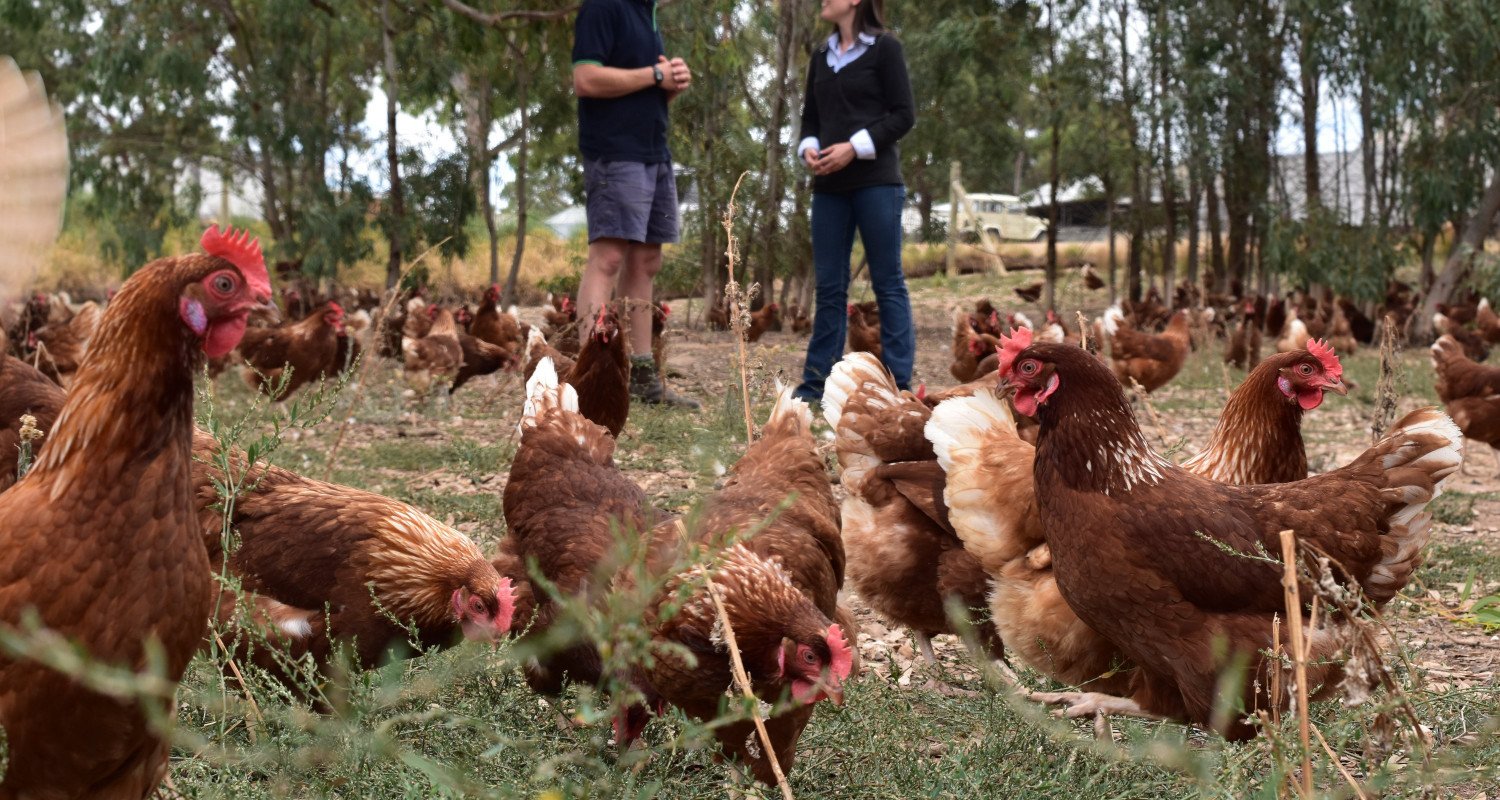
Egg Types & Labels
Egg Types & Labels
Have you ever stood in front of the egg section at the grocery store and felt overwhelmed?
Egg labels can be confusing and although terms like 'farm fresh', 'barn-laid' and 'pasture-raised' are familiar to most egg buyers, many people don't know what they actually mean.
Here at Australian Eggs, we've broken down a lot of the egg label complexity to help you make a more informed decision at the supermarket.

Making Sense of Egg Labels
While egg packaging can carry many different claims on the top, front, side and even underneath the lid of the carton, the most important pieces of information can be found directly on the label. Below is a list of the most common claims used on egg labels:
- Free Range Eggs: Free range eggs come from hens that have access to the outdoors. Farmers open up doors to the sheds every morning to let the hens out and close them up in the late afternoon when the hens are back inside. National free range egg laws require hens to have "meaningful and regular access" to an outdoor range during daylight hours and be free to roam and forage outside. The maximum outdoor stocking density by law is one hen per square metre, or 10,000 hens per hectare, and farmers must display their stocking density on the egg carton.
- Cage Eggs: Cage eggs are produced from hens that are housed in cages inside large, climate-controlled sheds. Cage eggs make up around 40 percent of supermarket egg purchases in Australia.
- Barn-Laid or Cage-Free Eggs: Barn-laid eggs, sometimes also called cage-free eggs, are laid by hens that are housed in large, climate-controlled sheds without cages. The hens are able to roam freely within the shed, socialising and perching, without the threat of outdoor predators or exposure to the elements.
- Organic Eggs: The main difference between organic and free-range is organic eggs are produced without the use of any chemicals. There is only a relatively small number of organic egg farms in Australia so look for a certified organic logo on the label to verify the claim.
- Pasture-Raised Eggs: This is a type of free range production that emphasises lower stocking densities and rotational grazing so there is always ground cover and grazeable plant species for the hens. However, hens don't eat grass like cows and sheep so pasture-raised hens are fed a grain-based diet like hens in other production systems.
- Vegetarian Eggs: Eggs marketed as vegetarian come from hens that are exclusively fed a plant-based diet. Don't be alarmed - protein supplements only make up a very small part of hens' mostly grain-based diet, and most of the protein comes from vegetarian sources like soybean meal. However, sometimes animal protein meal is used because it has a higher protein content and better balance of amino acids.
Omega-3 Enriched Eggs: Some farms choose to add small amounts of fish oil and oilseed supplements to the hens’ diet to produce eggs with higher levels of Omega-3.
Vitamin-D Enriched Eggs: An average serving of two eggs provides 82% of the recommended daily intake of vitamin D, so it’s safe to say that all eggs are an excellent source of Vitamin-D.
RSPCA Approved Eggs: This is a voluntary standard that egg farms can apply to participate in. Under it, farms are audited according to the RSPCA’s standards on indoor and outdoor systems for hens.
Hormone-Free Eggs: No hormones are used in the egg industry and all eggs are hormone-free.
Farm Fresh Eggs: This is a marketing term used to emphasise the freshness of the eggs. It is not a farming system.
Egg Carton Labels
Questions about egg carton labels? The useful fact sheet below highlights where you'll typically find the key pieces of information on an egg carton.

Egg Grading
The process of grading eggs is kind of like a beauty pageant (but for eggs). Modern egg grading equipment uses bright lights, sensors, weighing systems and acoustic resonance analysis to determine the quality of the egg. Only first quality eggs make it into a carton and go to market, and the remaining second quality eggs are used to make pasteurised products like liquid and powdered egg.
Egg Nutrition
Is there any single food that provides as many nutritional benefits as the humble egg? Each egg is packed with 11 different vitamins and nutrients and with just 310 kilojoules (or 74 calories), they are one of the healthiest foods you can eat.
The nutrient profile of Australian eggs and the contribution to Recommended Dietary Intakes (RDI) is shown in the following table for an X-Large or 700 gram carton:
| 1 egg (52g) | Average quantity per serving (2 eggs) | Average quantity per 100g | %DI | |
| Kilojoules | 310kJ | 620kJ | 596kJ | 7% |
| Calories | 74 Cal | 148 Cal | 142 Cal | 7% |
| Protein | 6.3g | 12.7g | 12.2g | 25% |
| Fat, total | 5.2g | 10.3g | 9.9g | 15% |
| - saturated | 1.7g | 3.3g | 3.3g | 14% |
| Carbohydrate | 0.7g | 1.4g | 1.4g | <1% |
| - sugars | 0.15g | 0.3g | 0.3g | <1% |
| Sodium | 70mg | 141mg | 136mg | 6% |
Serving size: 104g (2 eggs)
% Daily Intake. Based on an average adult diet of 8700kJ.
Can You Eat Eggs Every Day?

The Australian Guide to Healthy Eating recommends daily inclusion of foods from the lean meat and poultry, fish, eggs, nuts and seeds, and legumes/beans food group. The amounts needed vary depending on age and gender but the most common recommendation is two and a half serves daily. Two large eggs (120g) is equal to one serve.
Egg Colours
Different hen breeds produce different coloured eggs - from bluish tones to creamy pinks and even dark brown (and yes, green eggs are real, too). The main egg colour available in Australia is brown, although a small number of farms also sell white eggs. While many people assume brown eggs are more natural and therefore healthier, that’s not the case. Brown hens lay brown eggs, white hens lay white eggs, and they both have the same nutritional profile.
Learn More About Egg Farming
Curious about how eggs are farmed in Australia? Learn more about free-range eggs and barn-laid eggs with Australian Eggs. Or find out everything you’ve ever wondered about egg farming.
Want to see what an egg farm looks like? Take this interactive 360 degree tour to see how eggs are produced in Australia.
